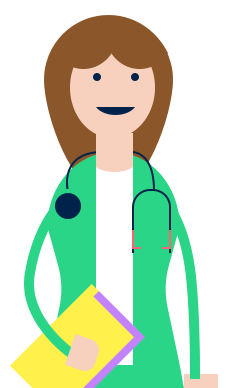Paracetamol, Codeine is used to relieve pain. Learn how to use the medication, its common side effects, special precautions to watch out for, and more.
What is this medication for?
This medication is a combination of two active ingredients, paracetamol and codeine. This medication is commonly used to relieve pain.
Taking a combination of paracetamol and codeine provides stronger pain relief than paracetamol alone.
How should I take or use this medication?
- You may take this medication with or without food.
- Do not take more than two tablets at any one time and make sure to take each dose at least four hours apart.
- Do not take more than eight tablets in 24 hours
- Do not take any other paracetamol-containing products while on this medication to prevent an overdose of paracetamol.
What should I do if I forget to take or use this medication?
- This medication is generally taken on an as-needed basis, which means you do not have to take it when there is no pain. You should take regularly only when directed by your doctor.
- If you forget to take a dose, take it as soon as you remember. Then take your next dose at the usual time. Do not take two doses to make up for the missed dose.
What precautions should I take when taking or using this medication?
- You are allergic to paracetamol, opioids (medication used to treat severe pain such as morphine and oxycodone), or any of the other ingredients of this medication
- You have a history of
- Liver disease
- Kidney disease
- Seizures (fits)
- Constipation or Obstructive bowel condition
- Lung diseases such as Asthma or Chronic Obstructive Pulmonary Disease (COPD)
- You are pregnant, planning to become pregnant, or breastfeeding.
- You are taking any other medications, including supplements, traditional medications, and herbal remedies.
What are some common side effects of this medication?
- Drowsiness
- Avoid driving or engaging in activities that require concentration
- Dizziness
- Avoid driving or engaging in activities that require concentration
- Constipation
- Drink more water (unless you are on fluid restriction) and eat more high fibre food such as fruits and vegetables.
- Dry mouth
- Nausea or vomiting
- Taking the medication with some food may help with nausea.
This medication has the potential to cause addiction. If you experience any difficulty stopping this medication when it is no longer needed, please consult your healthcare professional.
What are some rare but serious side-effects that I need to seek medical advice immediately?
The symptoms of a drug allergy include one or more of the following:
- Swollen face/eyes/lips/tongue
- Difficulty in breathing
- Itchy skin rashes over your whole body
If you experience any of these symptoms, you should stop your medication and see your healthcare professional immediately.
- This medication can cause respiratory depression, also known as hypoventilation, a condition where you breathe too slowly. Seek immediate medical attention if you experience any breathing difficulties, including shallow or slow breathing.
- This medication may cause a drop in your blood pressure. Seek immediate medical attention if you experience fainting, dizziness, light-headedness or blurred vision.
What food or medication should I avoid when I take or use this medication?
Avoid alcohol as alcohol may increase the risk of side effects such as drowsiness when taken with this medication.
How should I store this medication?
Store in a cool and dry place, away from direct sunlight. Keep this medication away from children.
How do I throw away this medication safely?
Pack this medication into a black trash bag and seal it tightly before throwing into the rubbish chute or bin.
Disclaimer
Please take note that the above is not a complete list of all possible side effects. If you have any concerns about your medication or if you have other side effects that you think are caused by this medication, please consult your doctor or pharmacist.
If you take more than the recommended dose, please seek medical advice immediately. The information provided on this page does not replace information from your healthcare professional. Please consult your healthcare professional for more information.
This article is jointly developed by members of the National Medication Information workgroup. The workgroup consists of cluster partners (National Healthcare Group, National University Health System and SingHealth), community pharmacies (Guardian, Unity and Watsons) and Pharmaceutical Society of Singapore. The content does not reflect drug availability and supply information in pharmacies and healthcare institutions. You are advised to check with the respective institutions for such information.
Last updated on October 2024















